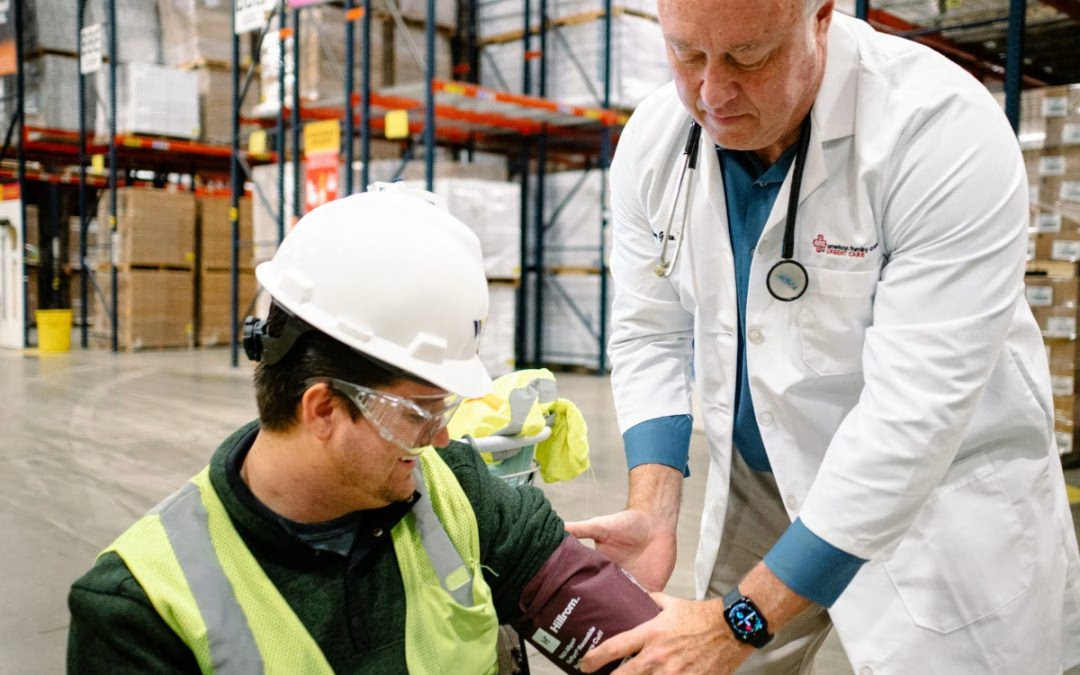by | Jun 30, 2024 | Healthy Living

Am I Dealing With a Poison Ivy Rash?
For anyone who spends time outdoors from hiking the trails to climbing mountains, the risk of encountering poison ivy is ever-present. This troublesome plant can cause an intensely itchy, oozing rash that can be both uncomfortable and unsightly. While avoiding contact with the plant is ideal, it’s important to know how to identify and treat a poison ivy rash should you accidentally cross paths.
What is Poison Ivy?
Poison ivy (Toxicodendron radicans) is a woody vine in the east or a shrub in the west native to North America. It’s part of the Anacardiaceous family, which also includes cashews, mangoes, and pistachios. A telltale characteristic is its typical clusters of three leaflets, prompting the old saying “Leaves of three, let it be.” Both the eastern climbing vine variety and the western shrub form contain an oily resin called urushiol, which is the culprit behind the rash.
How You Get the Rash
There are a few different ways people develop the classic poison ivy rash:
- Direct contact: Touching any part of the plant, including the roots, allows the urushiol oil to penetrate the skin.
- Indirect contact: Urushiol can stick to objects like clothing, tools, pets, etc. Touching these contaminated surfaces can spread the oil which can remain active for up to a year.
- Airborne exposure: Burning poison ivy plants can cause airborne urushiol particles to be inhaled, leading to a rash on the lining of the lungs.
Rash Symptoms and Severity
The symptoms of a poison ivy rash usually appear within a few hours to several days after exposure. Telltale signs include:
- Red, inflamed skin
- Intense itching and discomfort
- Oozing blisters that may appear in streaky lines
- Swelling in the affected areas
For most people, the rash is simply an annoyance that resolves within a few weeks. However, some cases can be more severe, especially with repeated exposures that lead to increased sensitivity. Seek medical attention if you experience difficulty breathing, a widespread rash covering large areas of the body or face, signs of infection such as pus or worsening pain/swelling, or lack of improvement after a week of home treatment.
Finding Relief from the Itch
Perhaps the most maddening aspect of a poison ivy rash is the incessant, unbearable itch. Thankfully, there are several home remedies and over-the-counter treatments that can provide relief:
- Cool compresses applied for 15-30 minutes can reduce inflammation
- Oatmeal baths can soothe irritated skin
- Calamine lotion helps to dry blisters and ease the itch
- Over-the-counter hydrocortisone cream reduces inflammation
- Oral antihistamines like Benadryl can counteract the histamine response causing itchiness
- Be sure to avoid scratching the rash, as this can lead to infection and potential scarring.
Prevention is Key
While dealing with a poison ivy rash is no fun, the best defense is taking preventative measures to avoid exposure altogether. When spending time in areas where the plant may be present:
- Learn to identify the plant’s distinctive three-leaflet clusters
- Wear long sleeves, pants, boots, and gloves to cover exposed skin
- Use an over-the-counter ivy-blocking product containing bentoquatam
- Wash clothes, gear, and pets that may have come into contact with the plant’s oil.
- If you suspect you’ve been exposed, immediately wash your skin with soap and water as soon as possible to remove any urushiol oil.
By being able to recognize poison ivy and taking proper precautions, you can avoid one of summer’s most unpleasant rites of passage – the dreaded poison ivy rash. However, if you do find yourself dealing with the telltale itch, don’t suffer needlessly. Make an appointment today at AFC Urgent Care Gastonia to find relief from your suffering!


